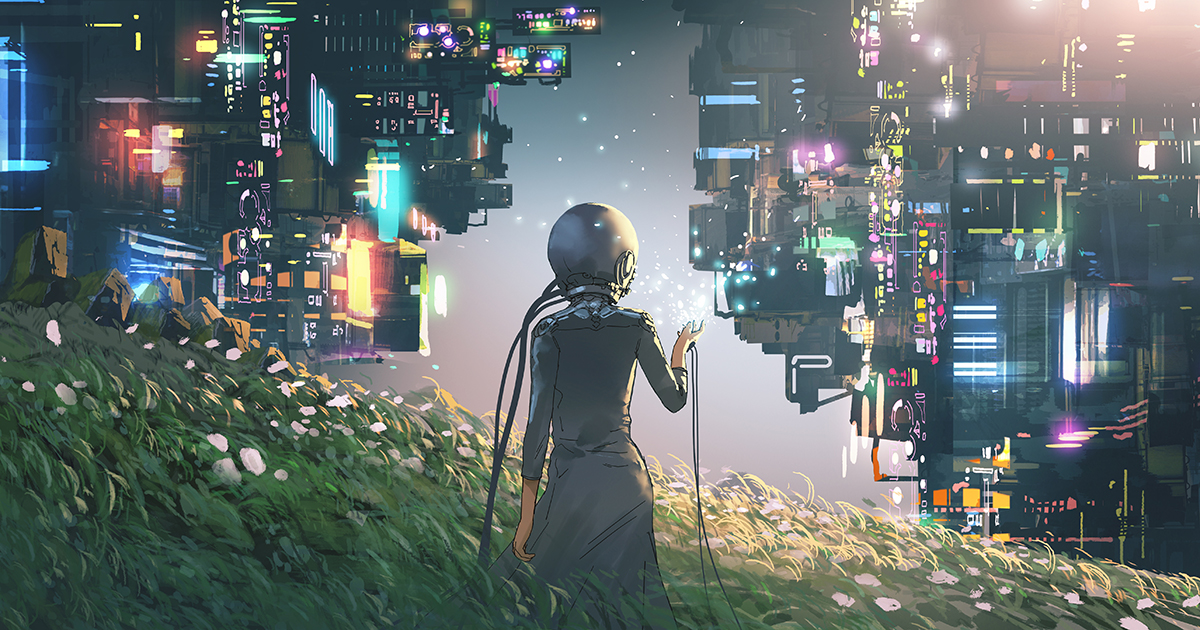
TL;DR
- Author Neal Stephenson says gamers and gaming tools are the fundamentals of the decentralized 3D internet.
- Gamers need to be rewarded by being part of the decentralized Blockchain-underpinning of the metaverse.
- Stephenson says AI lacks originality and detail and doubts it will produce sophisticated narrative 3D worlds, although it will be an assistant to get some of the way there.
READ MORE: AWE TALKS: METAVERSE BUILDING BLOCKS ARE ALREADY HERE (AWE Live)
With the arrival of Apple’s new Vision Pro XR headgear it’s worth asking if we are any nearer to building a next-gen version of the internet.
It’s too soon to know, sci-fi author and technologist Neal Stephenson told the XR community in a presentation at AWE Live, although the building blocks of the metaverse are taking shape. View the full talk in the video below.
These building blocks include the sophistication of game engines and “the fact that those game engines can be downloaded and used for free,” advances in power, and the lower state of the hardware needed to render three-dimensional imagery in real time, and — just as importantly — the user base.
“The people who’ve learned how to navigate 3D environments by playing video games must be past the one billion mark by this point,” he said.
However, if the next generation of the internet is to built on a model that decentralizes power and reward (which is a good thing in Stephenson’s mind), then support for those creators needs to be addressed.
“Right now, the skillset that’s needed in order to create metaverse experiences is basically what you see in the game industry. People who know how to use game engines and who know how to create the assets that feed into those game engines. We need to create the economic basis for them to get rewarded if they succeed in creating metaverse experiences that lots of people are enjoying.”
Lamina 1 is Stephenson’s own attempt to do this. It’s a blockchain on which to build the infrastructure of an open and decentralized metaverse that puts technology in the service of humans, not the other way around.
There’s no escaping the obligatory question these days on AI and its potential impact on the creative process. Are we getting close to being able to ingest an adventure book into AI, The Lord of the Rings for example, and generate a 3D world based on that story with characters and then be able to play it in VR?
Stephenson (of course) knows the folk at Weta VFX in New Zealand, which helped make The Lord of the Rings movies for Peter Jackson.
“If you watch those movies, one of the things that makes them great is the personal attention and care that’s lavished on every single detail of every costume and every prop,” he says. “So I don’t think we’re going to see work of that quality coming out of AI. Just because it requires that you do original thinking and come up with something different.”
Of Snow Crash and its Nostradamus-like foresight, he says, “I’d say I was the first to use that word [metaverse], not the first to imagine that. I mean, as I’m sure you know, with your background in the field, there were people thinking about similar systems before I wrote the book. Habitat being one example.
“The metaverse as described in Snow Crash was my best kind of guess as to what a mass medium based on 3D computer graphics might look like, but the metaverse per se in the book is neither a dystopian or utopian, or at least that’s how I meant to portray it.
“In the opening pages of the book our initial exposure to the metaverse is, is kind of very mass market, lowest common denominator, sort of crude, obvious, like the kind of the worst of television. But later on, as we get farther into the book, we see that people have used it to make beautiful works of art. And we see that there are some people who have lavished a lot of time and attention on making homes in the metaverse that are exquisite works of art.”


Discussion
Responses (10)